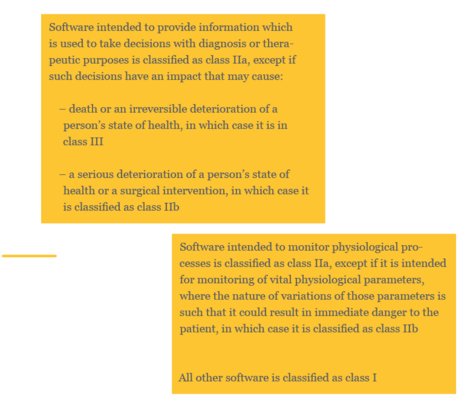 ©mooshny - stock.adobe.com
©mooshny - stock.adobe.com
Digital health products fall under EU legislation
ed* No. 02/2017 – Chapter 3
There are currently discussions in Germany and the EU on how to regulate the testing of quality and safety standards for new digital health products such as apps. There are many similarities to the market access rules for medical devices and medicinal products, which have clear EU regulations. The EU has now created provisions for digital applications.
Social insurance bodies offer apps
The range of mobile apps offered by the statutory insurance bodies is growing. The statutory health care funds offer their members numerous information apps related to stress, nutrition and general services. There are an increasing number of apps for prevention (e.g. vaccination manager), diagnosis (e.g. detecting changes in skin moles) and therapy (e.g. medication reminder apps). In statutory pension insurance, “tele aftercare” plays an important role. This can be used to help patients suffering from depression by providing aftercare with a smartphone app following inpatient rehabilitation. The social accident insurance institutions offer prevention apps for hazard assessments in the workplace.
It is important to have a clear distinction between an app which is a medical device and one which is not. This is because a diabetes app which calculates the wrong insulin dosage can have a severe adverse effect on health, but this is not the case for an app with a step counter.
New EU classification rules for apps
The new EU Directive on medical devices, which came into force in May 2017, not only places stricter conditions on market access and competition for analogue medical devices such as hip prostheses but also for digital health products. According to the Directive, an app or software is a medical device when it exhibits a medical purpose.
There are new risk classification rules to help with delineation and differentiation (see graphic on Page 6)

(Directive (EU) 2017/745 on medical devices, Annex VIII, Rule 11)
Safer apps through CE certification?
The new EU directives are likely to result in a higher classification for apps. In practice, most apps tend to meet the requirements set out in risk class IIa at the very least. These apps can influence decisions on therapy or diagnosis.
As a result, notified bodies are increasingly involved in assessing the conformity of apps. This ensures that the quality management systems and clinical evaluations of app manufacturers are examined by a notified body. This should improve safety.
The new directive states that products in class I, such as prevention apps for cardio sports which primarily give training recommendations, do not require a notified body to be involved. A manufacturer declaration is enough.
(No) European quality standards for health apps
Health apps related to lifestyle and wellbeing, which are not medical devices, are still not subjected to any sector-specific EU regulations. The European Commission’s attempt to draw up quality criteria guidelines for apps as part of its Green Paper on mobile health has stalled for the time being.
The aim was to draw up a list of criteria for transparency and uniform quality standards such as effectiveness, trust and data security. The working group set up to do this, which included German social insurance representatives, failed to reach an agreement on a positive list of quality standards. The various stakeholders were at odds regarding the conditions which a health app must fulfil in order to be given an “EU mark of quality”.
The EU and the Member States
The EU should make use of its right to adopt European minimum standards on safety and health for digital health products. The situation is different in terms of access to healthcare. The funding of apps by social insurance bodies and the required benefit assessment are the sole responsibility of the Member States.

